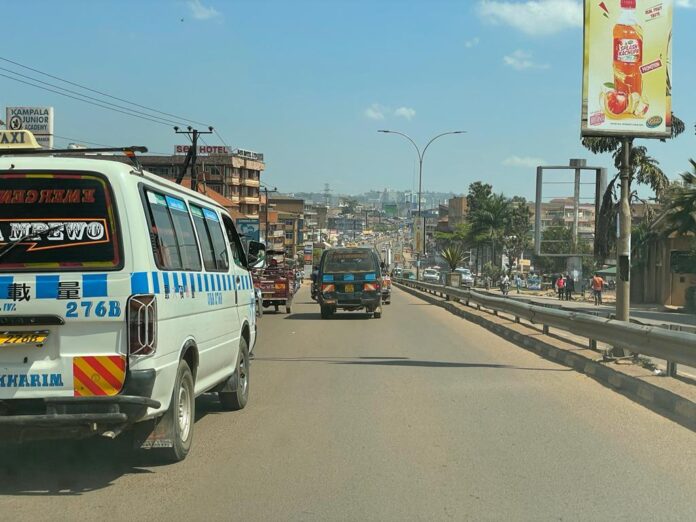Driving in Uganda can be challenging for foreign visitors due to unfamiliar roads, driving practices, and road conditions. Below is the Uganda travel guide directed to primarily help with your safety while driving in Uganda:
Drive on the left side of the road: Driving on the left is a system where vehicles drive on the left side of the road and the driver sits on the right-hand side of the vehicle. This is the opposite of driving on the right, which is the system used in countries such as the United States, Canada, and most of Europe.
Carry your driving license and passport or identification documents: Carrying your driving license and identification documents when driving in Uganda is important for legal, insurance, and safety reasons. It’s recommended to keep these documents in a safe place and easily accessible while driving.
Wear a seatbelt at all times: Wearing a seatbelt is important when driving in Uganda to protect yourself from injuries, comply with the law, meet insurance requirements, and promote safe driving habits. It’s recommended to wear your seatbelt at all times, even on short trips and in slow-moving traffic.
Do not use your mobile phone while driving: Using your mobile phone while driving in Uganda is dangerous, illegal, and can have severe consequences. It’s important to avoid distractions and stay focused on the road while driving to ensure your safety and the safety of others. If you need to use your phone, it’s recommended to pull over to a safe location and stop the vehicle before using your phone.
Avoid driving at night or in remote areas: Avoiding driving at night or in remote areas in Uganda can help to ensure your safety and prevent potential risks because of; poor visibility, limited road infrastructure, limited access to services, and security concerns. If you need to travel at night or in remote areas, it’s recommended to plan your route in advance, ensure your vehicle is in good condition, and take necessary
Precautions to address potential risks: Here are some precautions to consider; pla your trip in advance, ensure your vehicle is in good condition, plan to travel in a group or with a local guide, inform someone back home of your itinerary, carry a mobile phone and emergency supplies, plus always stay alert and vigilant.
Observe speed limits and traffic signs: Observing speed limits and traffic signs is important for ensuring safety, meeting legal requirements, maintaining traffic flow, reducing environmental impact, and establishing a good personal reputation. It’s important to pay attention to signs and signals on the road, adjust your speed accordingly, and obey traffic laws and regulations at all times.
Be aware of pedestrians, cyclists, and motorbikes: Being aware of pedestrians, cyclists, and motorbikes is an important part of safe and responsible driving in Uganda. Always yield to pedestrians at crosswalks and be cautious when passing cyclists or motorbikes most importantly, give them plenty of space.
Avoid overtaking unless it’s safe to do so: Avoid overtaking unless it’s safe to do so is important for ensuring safety, meeting legal requirements, and maintaining a good personal reputation. It’s important to exercise caution, pay attention to road conditions and the behavior of other road users, and only overtake when it’s safe and legal to do so.
Always signal when changing lanes or turning: Signaling when changing lanes or turning is important for ensuring safety, meeting legal requirements, maintaining traffic flow, promoting a positive driving culture, and showing consideration for other road users. It’s important to signal in advance of your intended actions, use your turn signals correctly, and be aware of other road users around you.
Give way to emergency vehicles: Giving way to emergency vehicles is important for ensuring safety, meeting legal requirements, contributing to the common good, maintaining traffic flow, and fulfilling your social responsibility as a driver. It’s important to be aware of emergency vehicles around you, pull over to the side of the road if possible, and allow them to pass safely and quickly.
Avoid driving on dirt or unpaved roads unless you have a 4×4 vehicle: Avoiding to drive on dirt or unpaved roads unless you have a 4×4 vehicle is important for ensuring safety, avoiding vehicle damage and inconvenience, and minimizing the environmental impact of driving. If you do need to drive on unpaved roads, it’s important to be familiar with the terrain, drive slowly and cautiously, and be prepared for unexpected conditions.
Be aware of animals on the road, especially in national parks: Being aware of animals on the road, especially in national parks, is important for ensuring safety, meeting legal requirements, minimizing environmental impact, fulfilling ethical considerations, and enhancing the enjoyment of the park for all visitors. It’s important to obey regulations or laws in place, drive cautiously and slowly, and be prepared to give way to animals if necessary.
Be prepared for unexpected obstacles or hazards: Being prepared for unexpected obstacles or hazards is important for ensuring safety, avoiding vehicle damage and inconvenience, maintaining traffic flow, and minimizing the environmental impact of driving. It’s important to be aware of your surroundings, drive cautiously and be prepared to take evasive action if necessary, and be prepared for unexpected conditions by carrying appropriate equipment such as a spare tire or emergency kit.
Check your vehicle before driving, including brakes, tires, and lights: Checking your vehicle before driving, including brakes, tires, and lights, is important for ensuring safety, maintaining vehicle performance, complying with legal requirements, saving costs, and minimizing the environmental impact of driving. It’s important to develop a regular maintenance schedule, and to conduct pre-trip checks before embarking on any long journey.
Avoid driving in heavy rain or flooding: Avoiding to drive in heavy rain or flooding is important for ensuring safety, avoiding vehicle damage, maintaining traffic flow, and minimizing the environmental impact of driving. It’s important to stay up to date on weather conditions and to avoid driving in hazardous conditions. If you must drive in heavy rain or flooding, take appropriate precautions such as slowing down, turning on your headlights, and avoiding flooded areas.
Be aware of traffic congestion in major cities like Kampala: Being aware of traffic congestion in major cities like Kampala is important for ensuring safety, minimizing frustration and delays, and reducing the environmental impact of driving. It’s important to plan ahead and allow extra time for travel during peak traffic periods, and to avoid engaging in risky driving behaviors such as speeding or tailgating.
Do not drink and drive: Drinking and driving is a dangerous and illegal practice that should always be avoided. If you plan to drink, consider hiring a driver, taking public transportation, or arranging for a ride share service.
Follow the rules of the road and local customs: Following the rules of the road and local customs is important for ensuring safety, avoiding legal consequences, showing cultural sensitivity, and maintaining traffic flow. It’s important to familiarize yourself with the local traffic rules and customs before driving in a new area, and to always obey traffic signals and signs. Additionally, be respectful of other drivers and pedestrians, and avoid engaging in aggressive or unsafe driving behaviors.
Respect other drivers and give way when necessary: Respecting other drivers and giving way when necessary is an important part of safe and courteous driving in Uganda. It’s important to be aware of your surroundings and to always yield to emergency vehicles, pedestrians, and other drivers who have the right of way.
Use a GPS or map to navigate unfamiliar roads: Using a GPS or map to navigate unfamiliar roads can help you avoid getting lost, reduce stress and anxiety, improve safety, and increase efficiency. It’s important to ensure that the device is updated with the most current maps and to have a backup plan in case the device malfunctions or loses signal. Additionally, always remain focused on the road and avoid looking at the device while driving.






